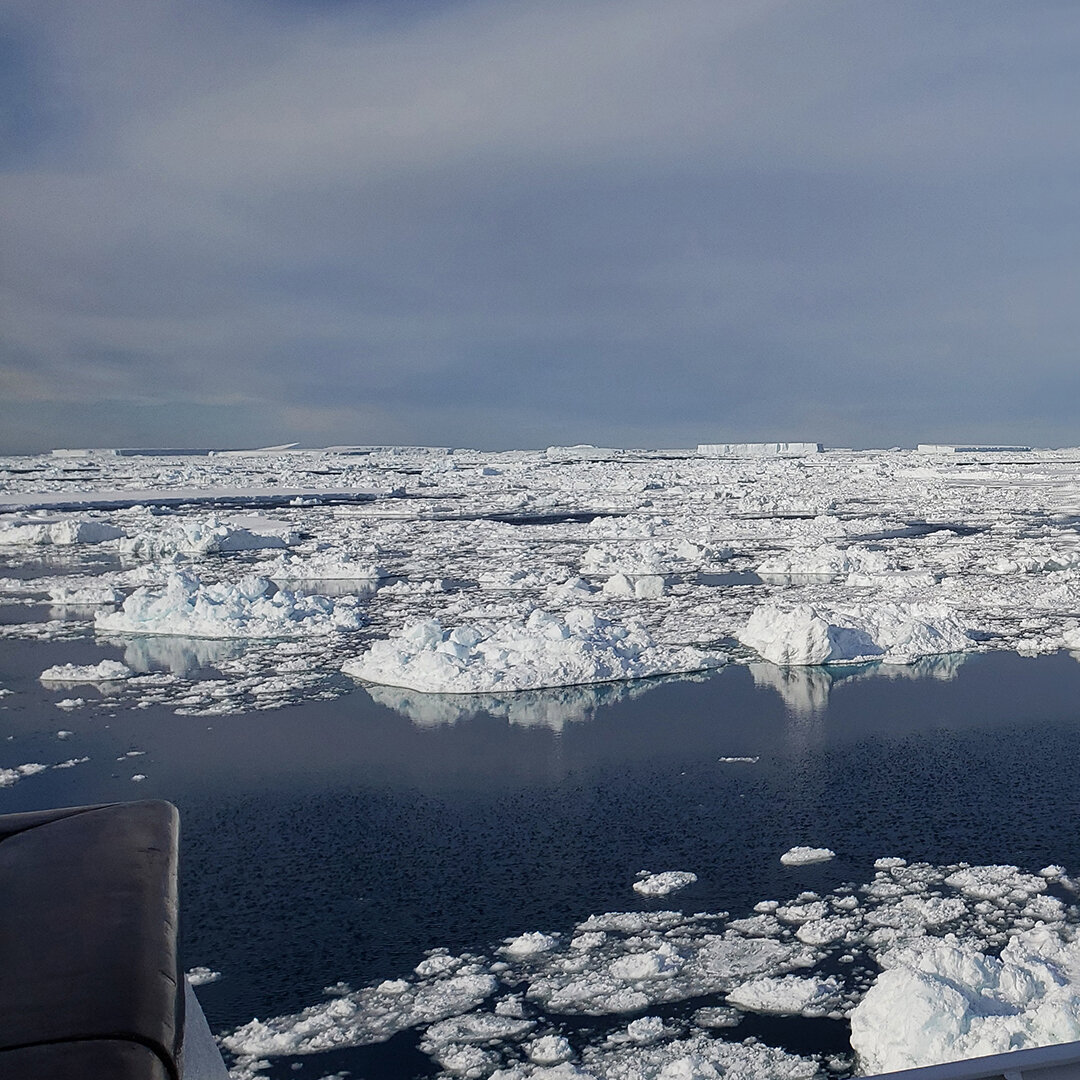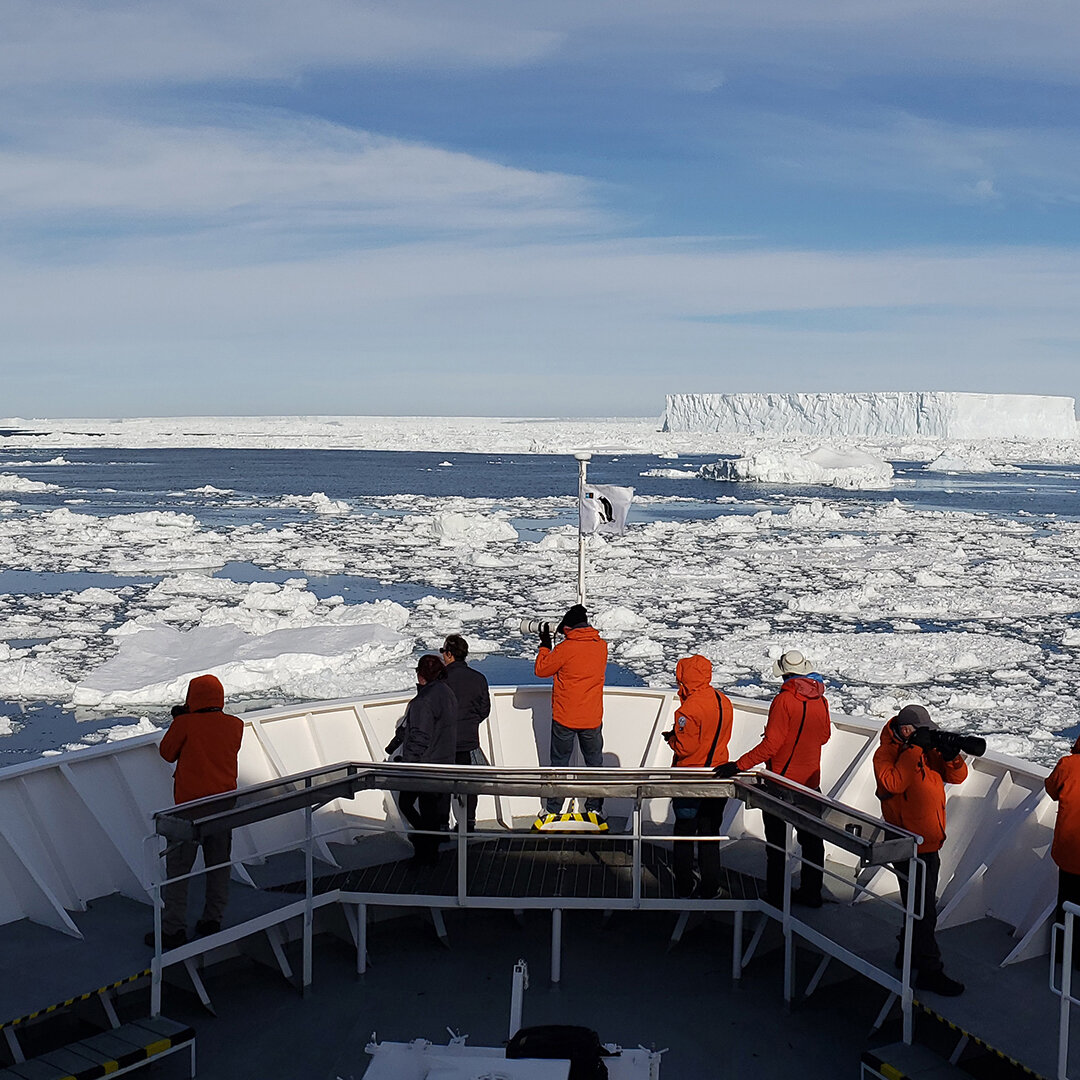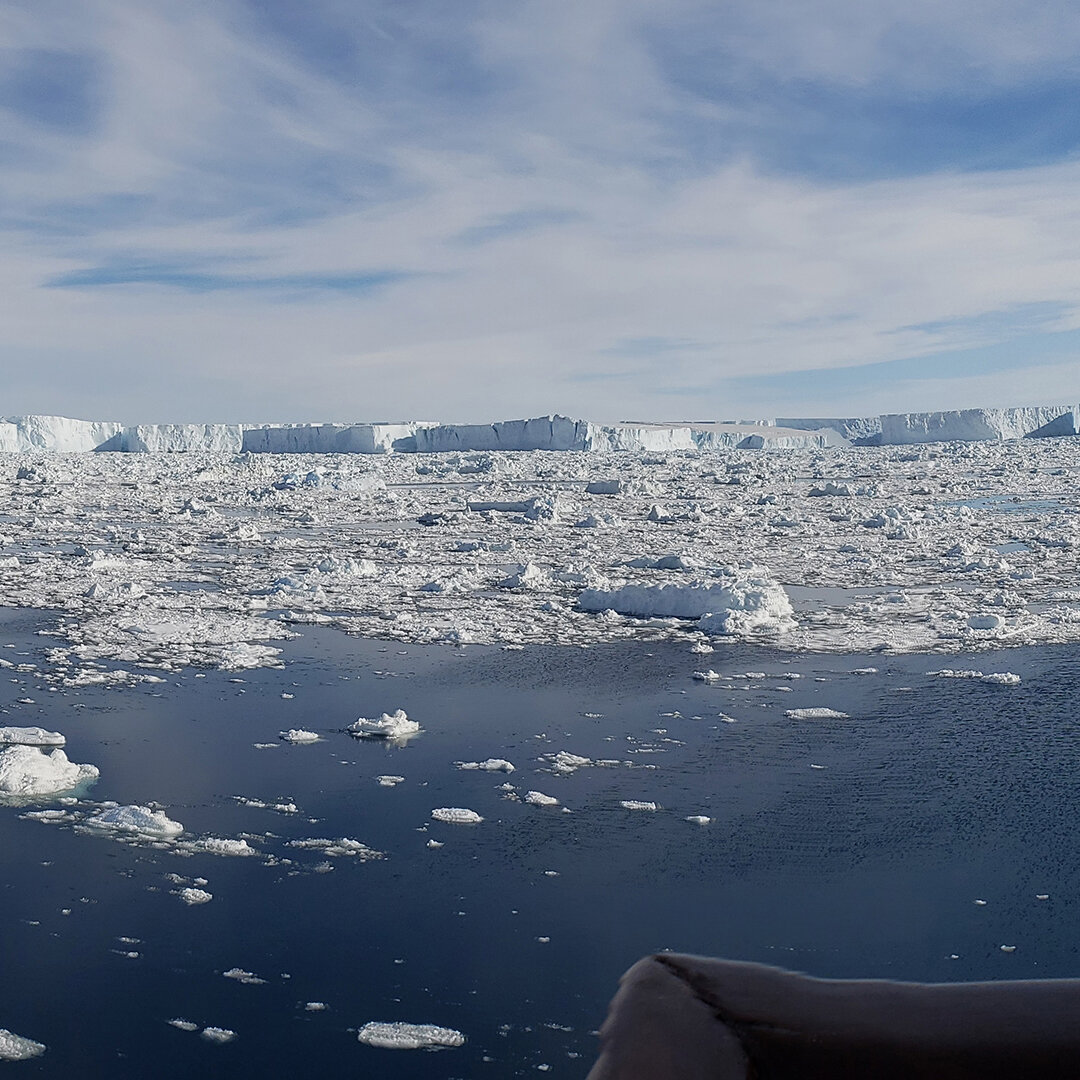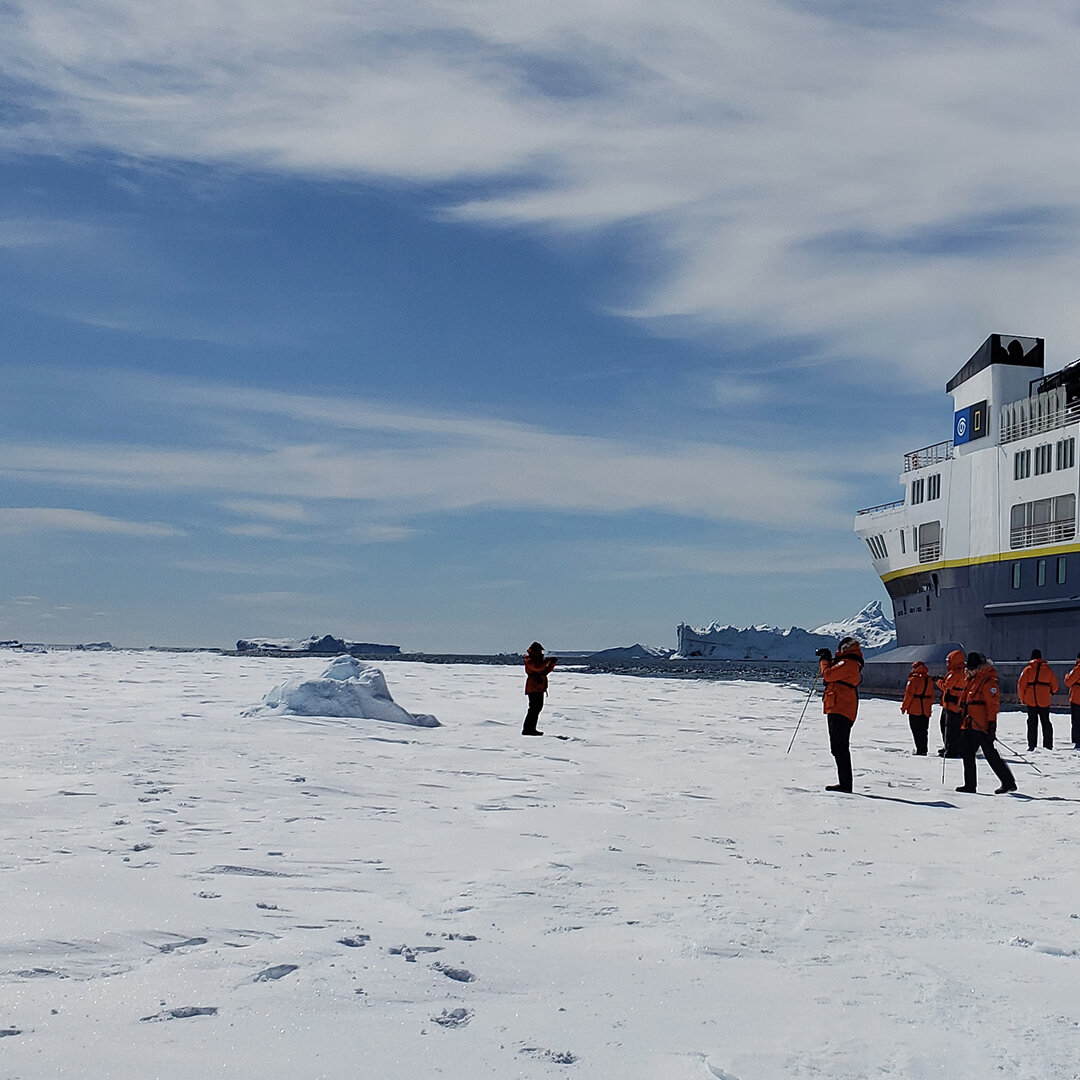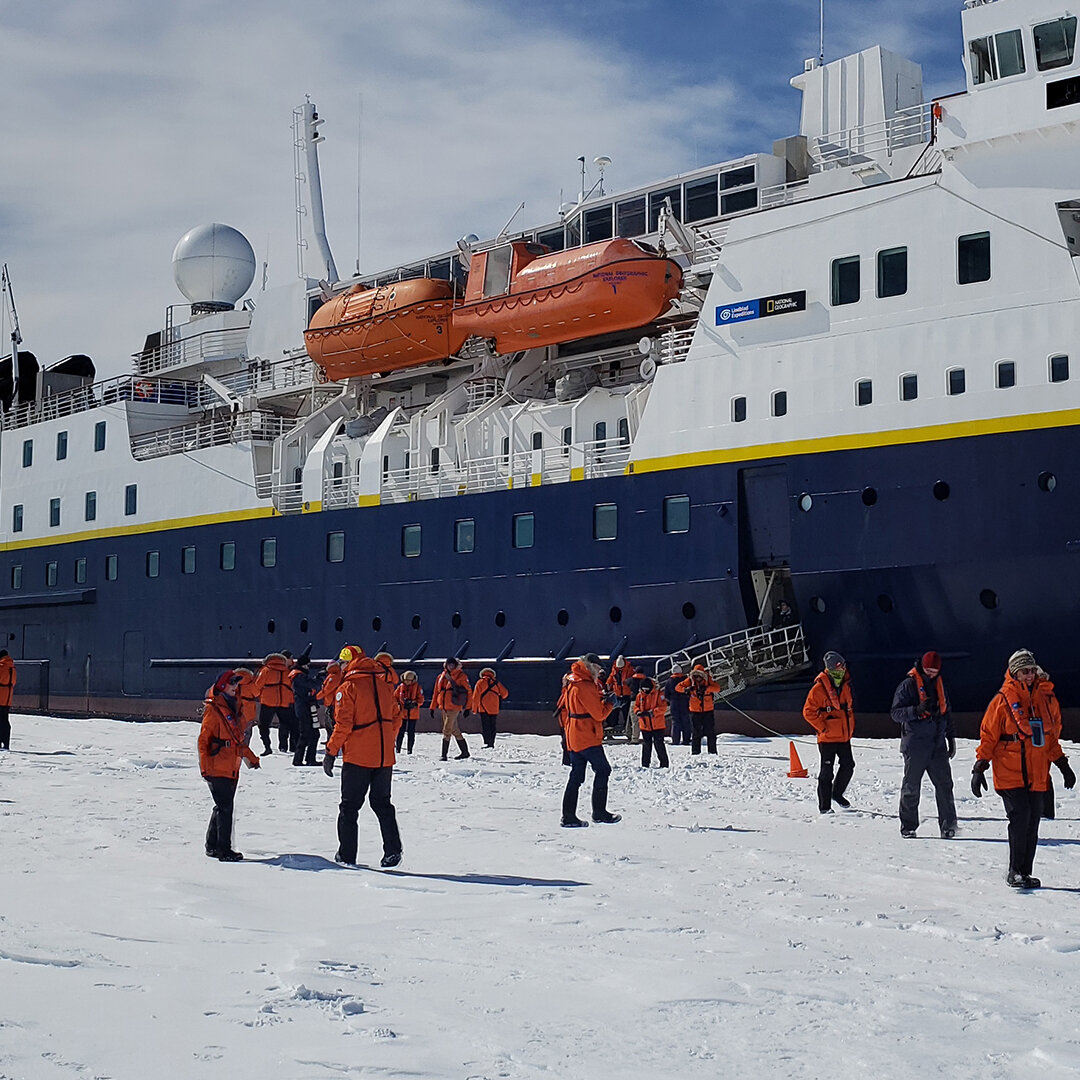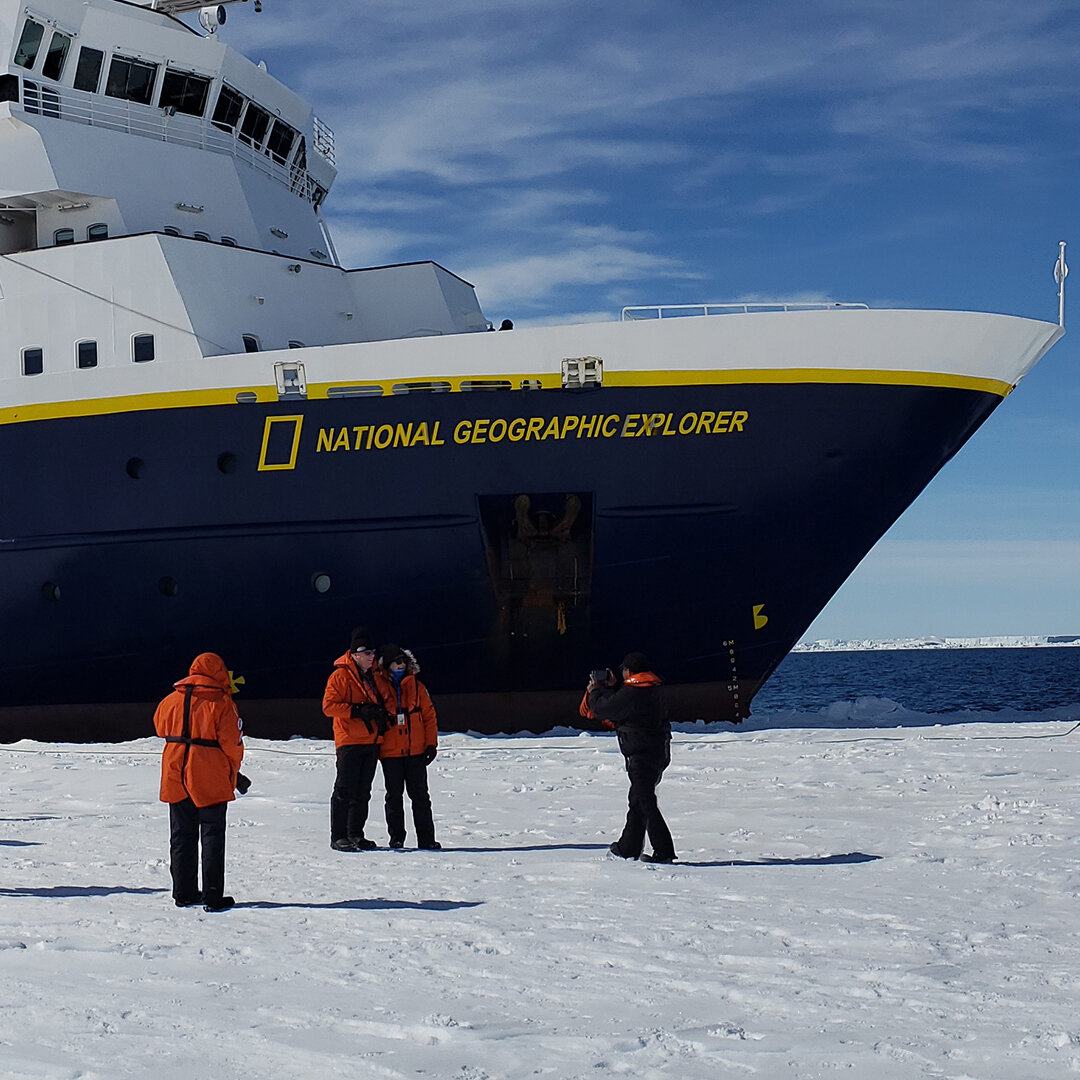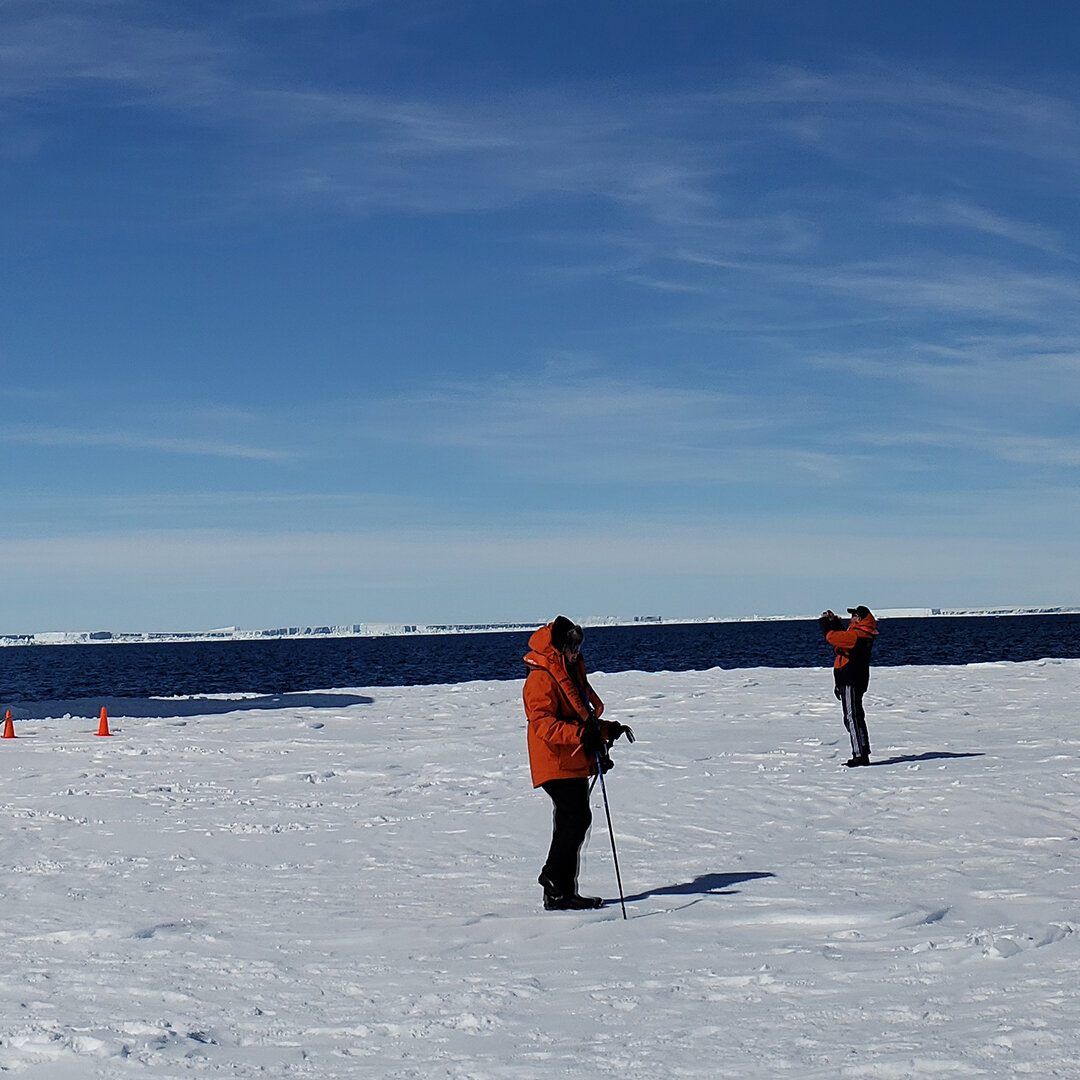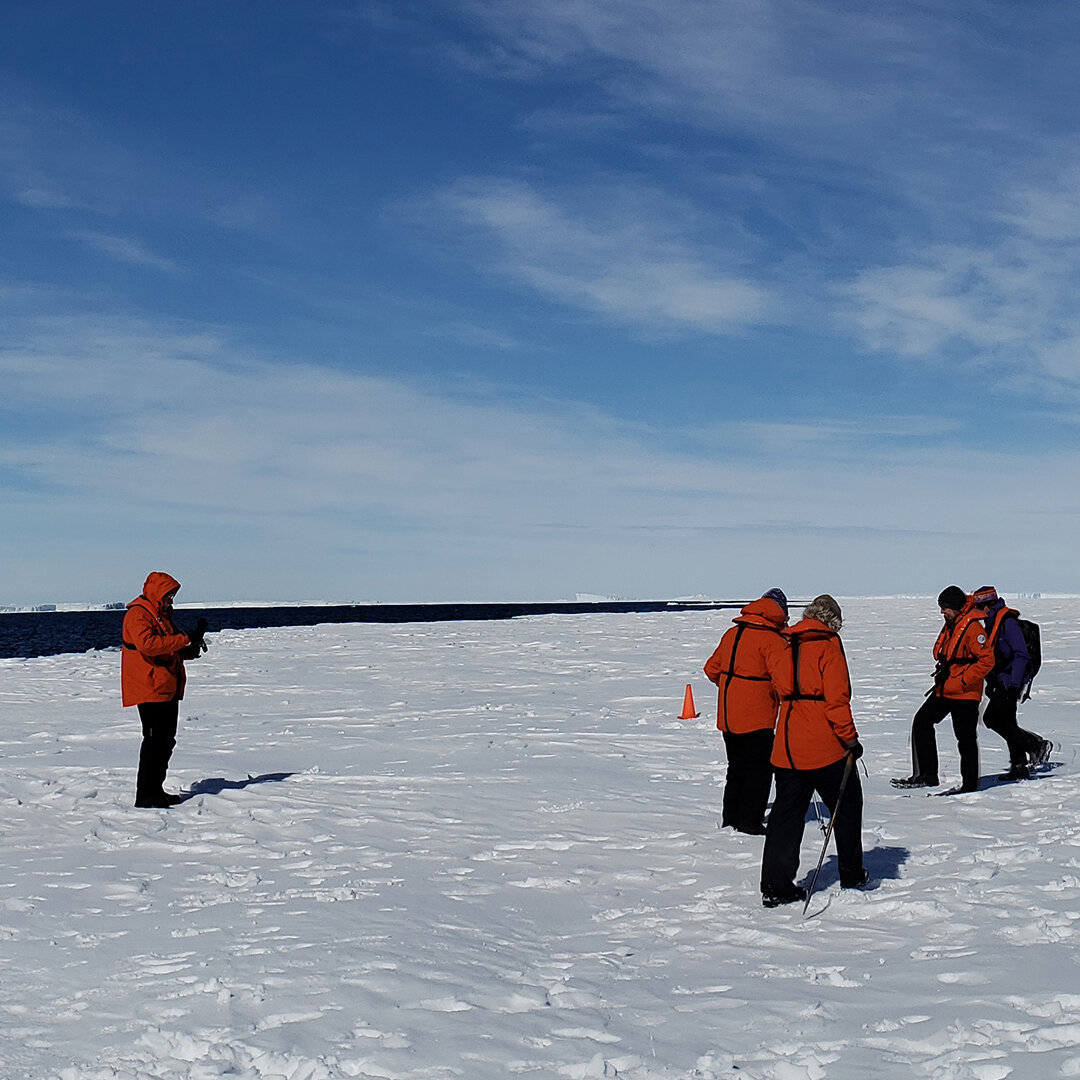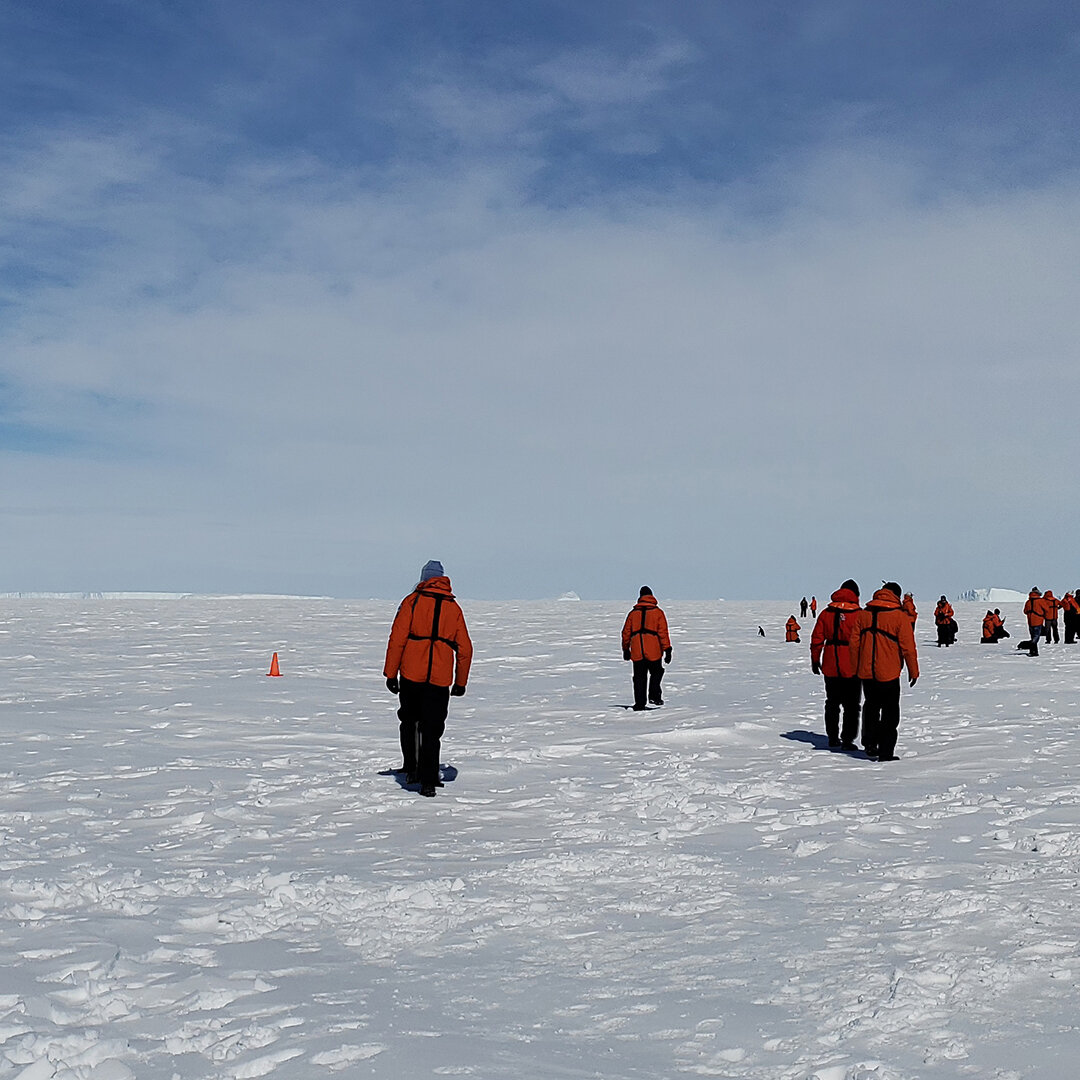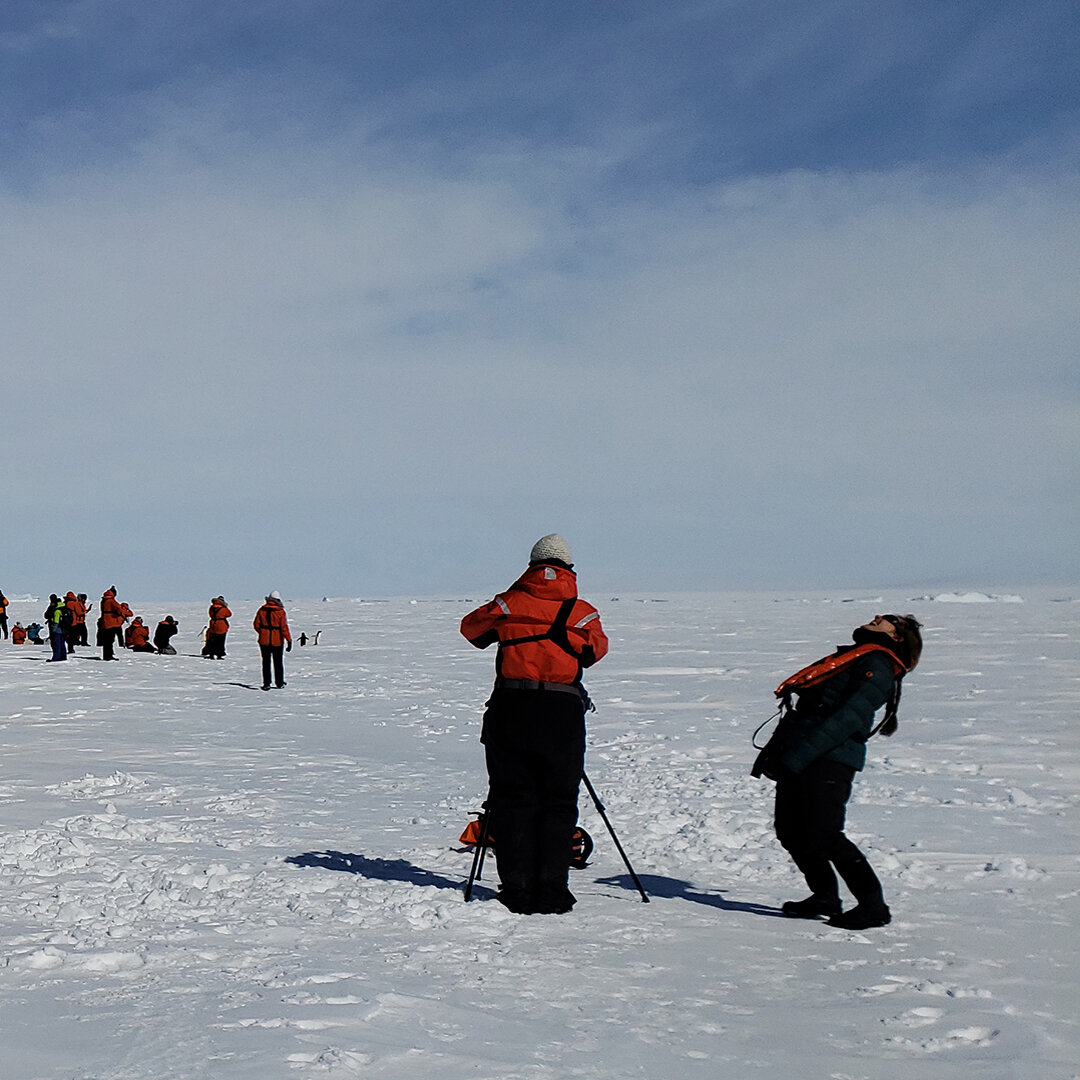Antarctic Ice
The variety and vastness of the ice of Antarctica is humbling, haunting, and naturally powerful to me. Ice in Antarctica is like nowhere else on earth. The “Frozen Continent” is defined by it. Land ice accumulated from many millennia of compressed snowfall covers 98 percent of Antarctica.
When gravity compels a portion of land ice to flow, it becomes a glacier. The good folks at Google tell me the ice sheet of Antarctica averages a thickness of over 7,000 feet (the thickest being more than 15,000 feet!), and it contains about 70 percent of all the world’s fresh water. Crazy numbers.

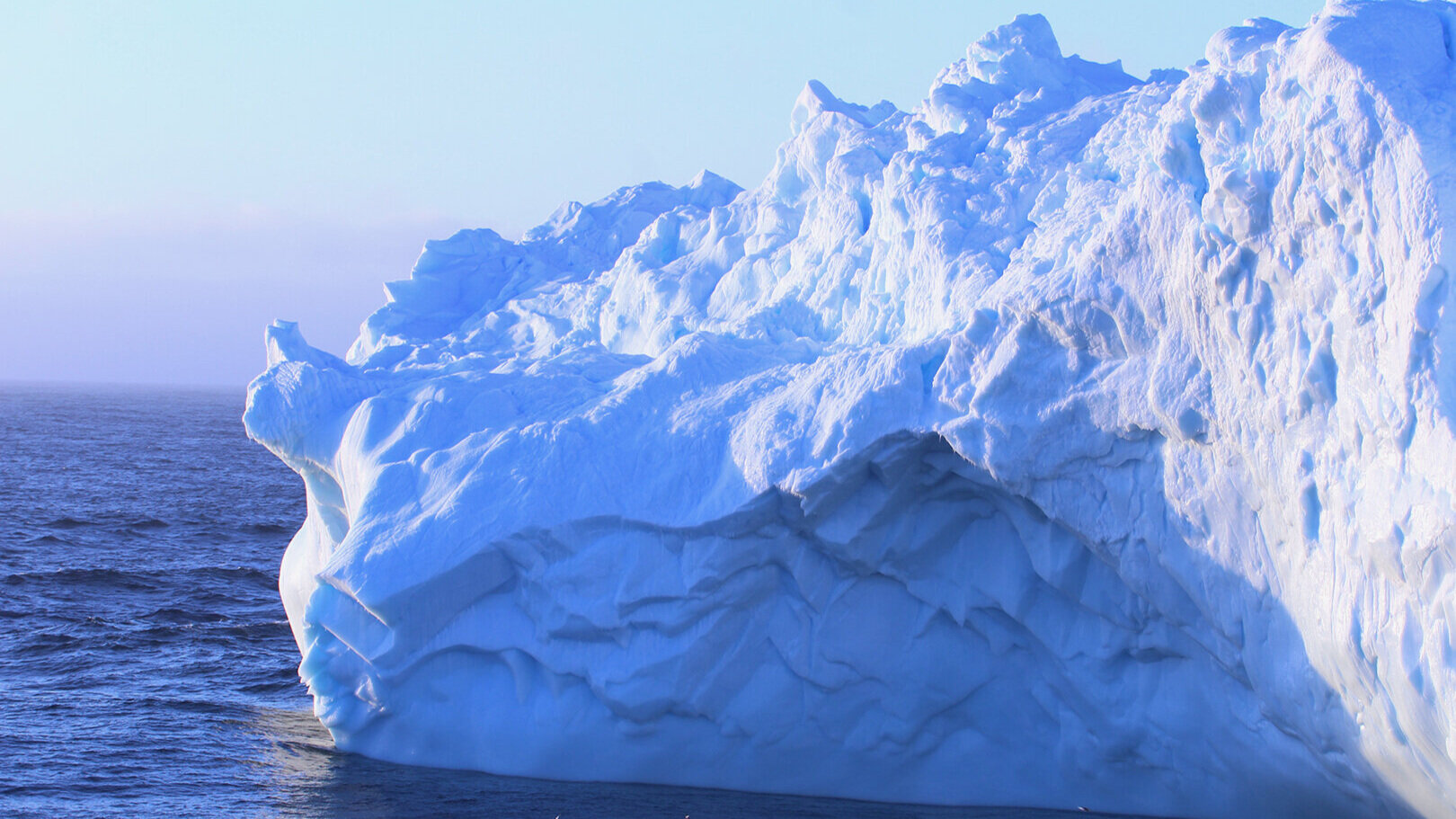
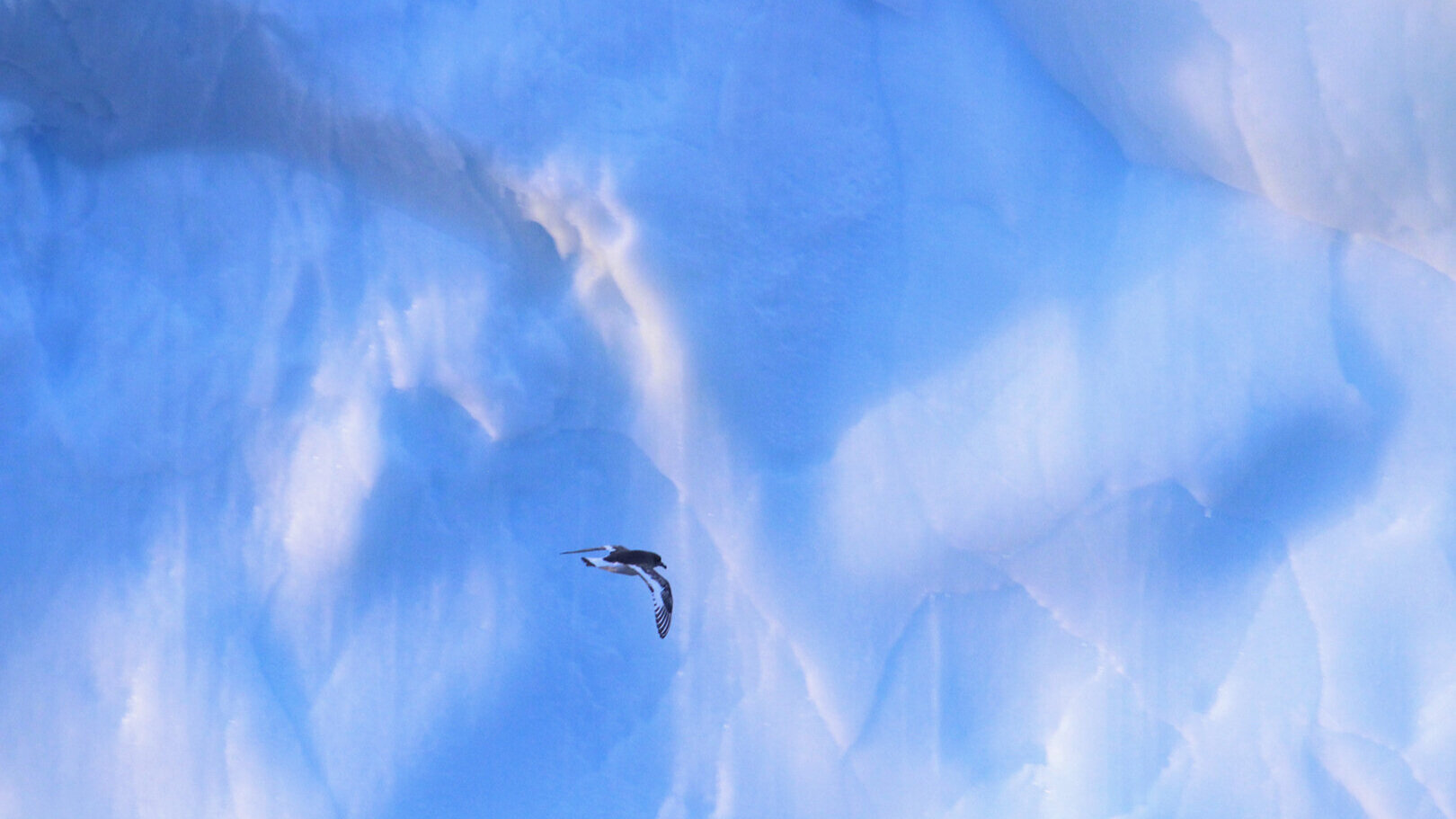
Sea ice occurs when the ocean waters adjacent to Antarctica freeze. It’s a seasonal melt/freeze cycle, and because it is made of ocean water, melted sea ice doesn’t change sea levels (melting land ice does).
Part of the adventure of going to Antarctica is the sense of remoteness gained from the two-plus days of steaming by ship south. Even though tourists such as myself typically only get to the northern tip of the 800-mile long Antarctic Peninsula, it is a fantastically isolated place. The courage and tenacity of the true adventurers in wooden sailboats who first went there is impossible to imagine.
The entire horizon was filled with this immense iceberg! (Click the image to see more)
A celebration usually ensues with the first ice sighting of Antarctic ice. Gradually, one becomes aware of a changing landscape beyond the comforts of the ship. Icebergs appear and slide past in greater and greater numbers. Some seem immense to novice viewers...until they see the really big ones! Some are tabular, flat on top and with edges that look factory-cut. Others have been chiseled and grooved, wave-hammered and and weather-beaten. Many were bigger than our ship! Each is unique.


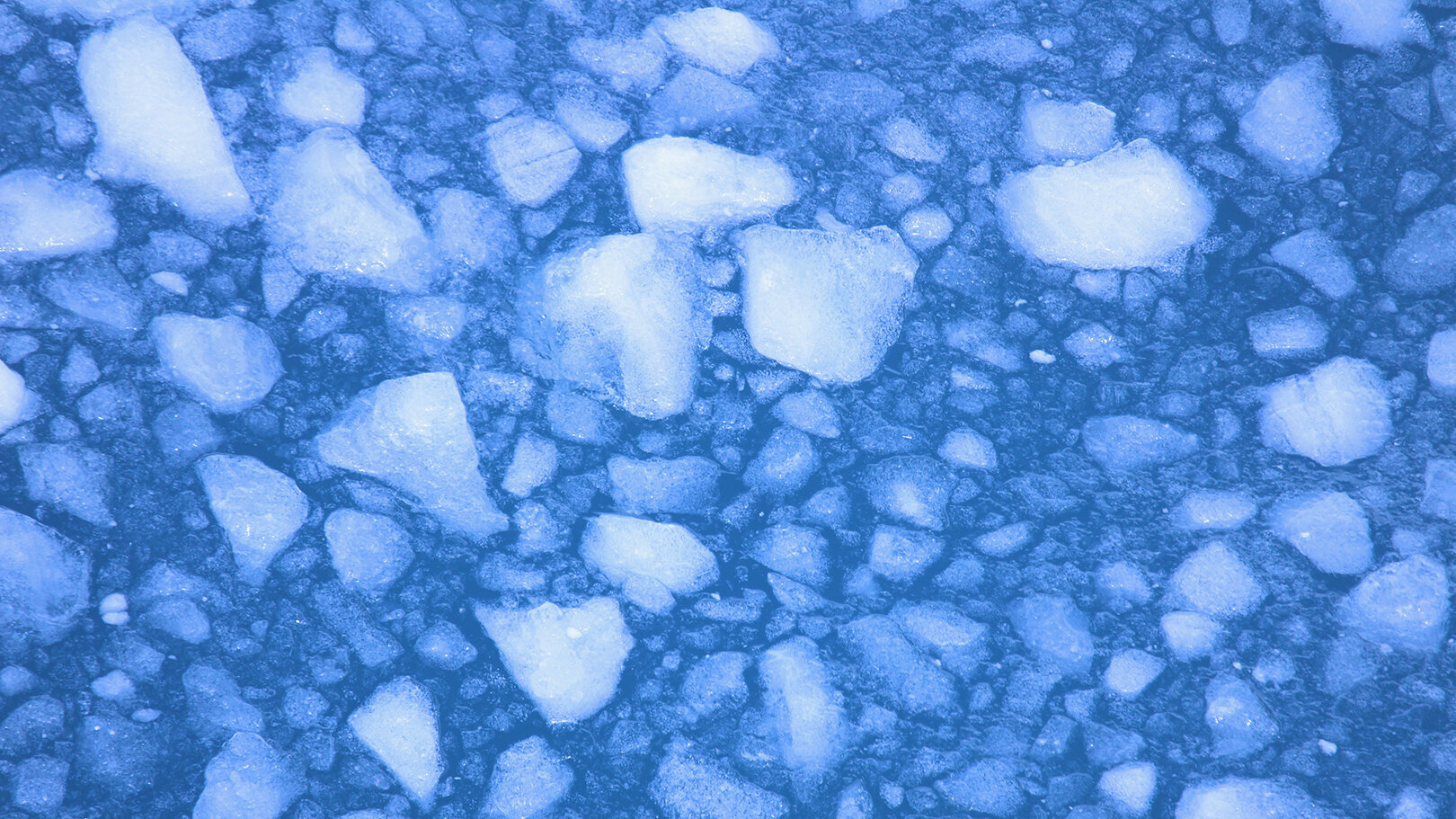
Viewing ice often involves being “wow’ed” by the big ones, but the visual feasts can also be subtle. One pastime was watching patterns in the “brash” ice, which is made of smaller chunks (less than about 6 feet across) of floating ice. These fragments from the wreckage of larger ice forms made wonderful ethereal designs in the water. From above, we could also enjoy the colors and shapes of the submerged, hidden parts of icebergs floating by. Once, we were in such thick brash that it seemed we were steaming across an ice field. One unfortunate Weddell seal was startled to awaken and find our ship looming over it!
After reading about Ernest Shackleton’s travails in the Weddell Sea (blog on that pending), I never imagined we’d go there, but I hadn’t met our expedition leader, Russ, yet. As intrepid as they come, when he saw the ice report, he knew we could try for a view of the A-68-A, a truly gigantic iceberg. One of the largest recorded icebergs ever, it’s a piece from a monster that calved off the Larsen Ice Shelf in July, 2017. It had floated 150 miles to a position at about 64 degrees, 30 minutes South (that’s pretty far south!). From my journal: “A-68-A was a battlement wall hundreds of feet high and flat enough to land a plane on. Incredible.” Our naturalists said that this “fragment” was about 85 miles long and 26 miles wide. It filled the horizon from one side to the other, lending new meaning to the term “immensity.”
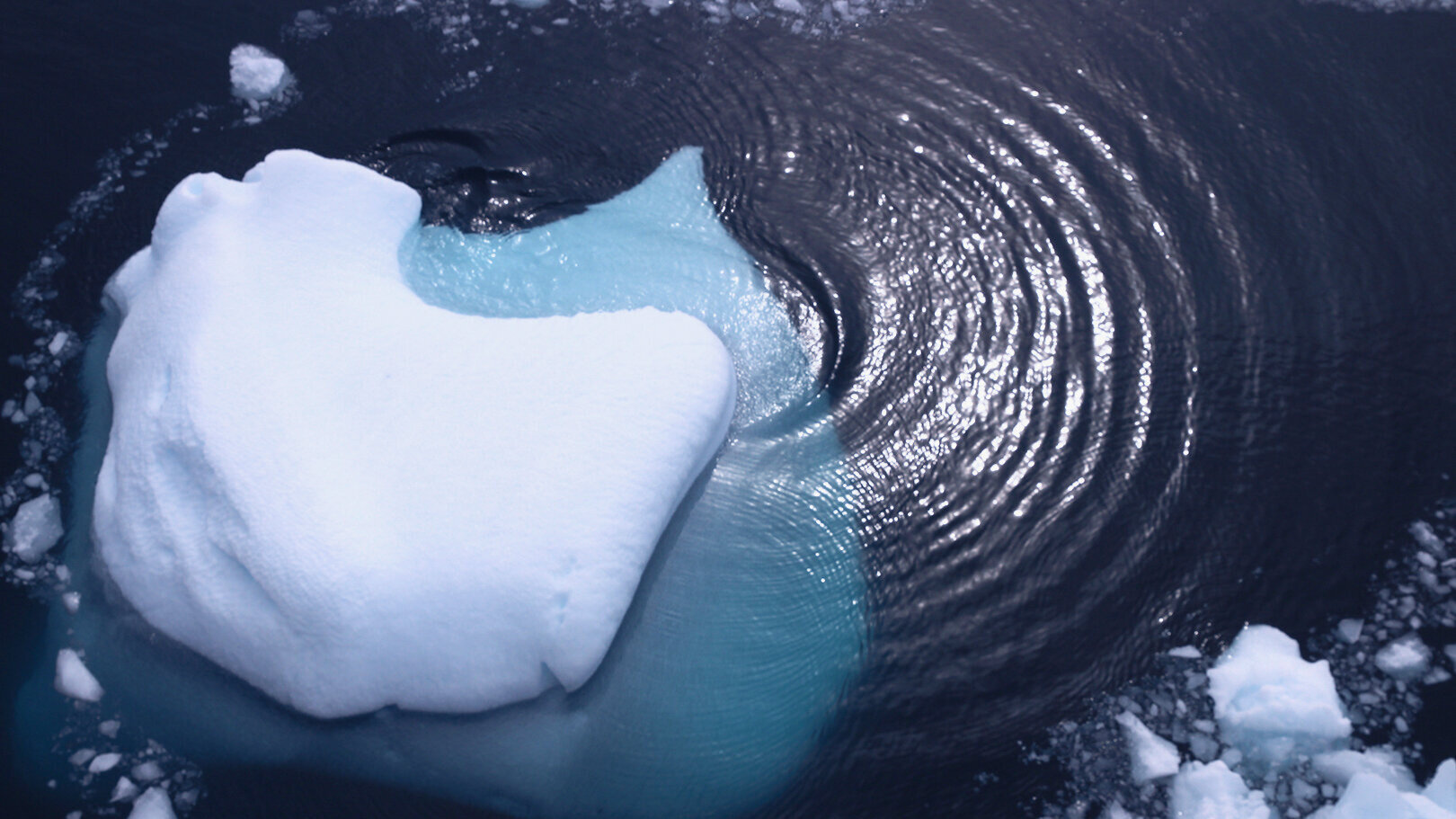
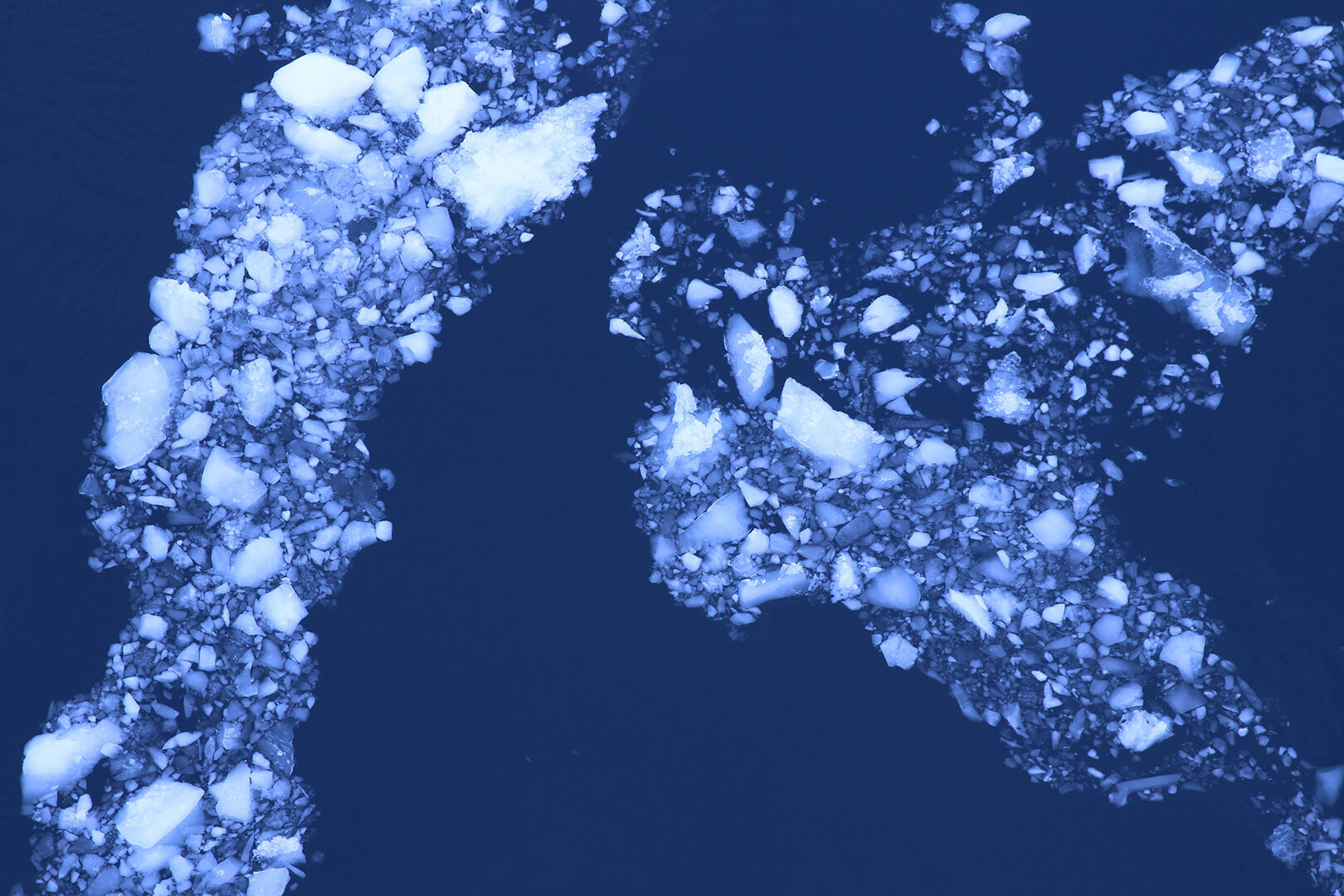
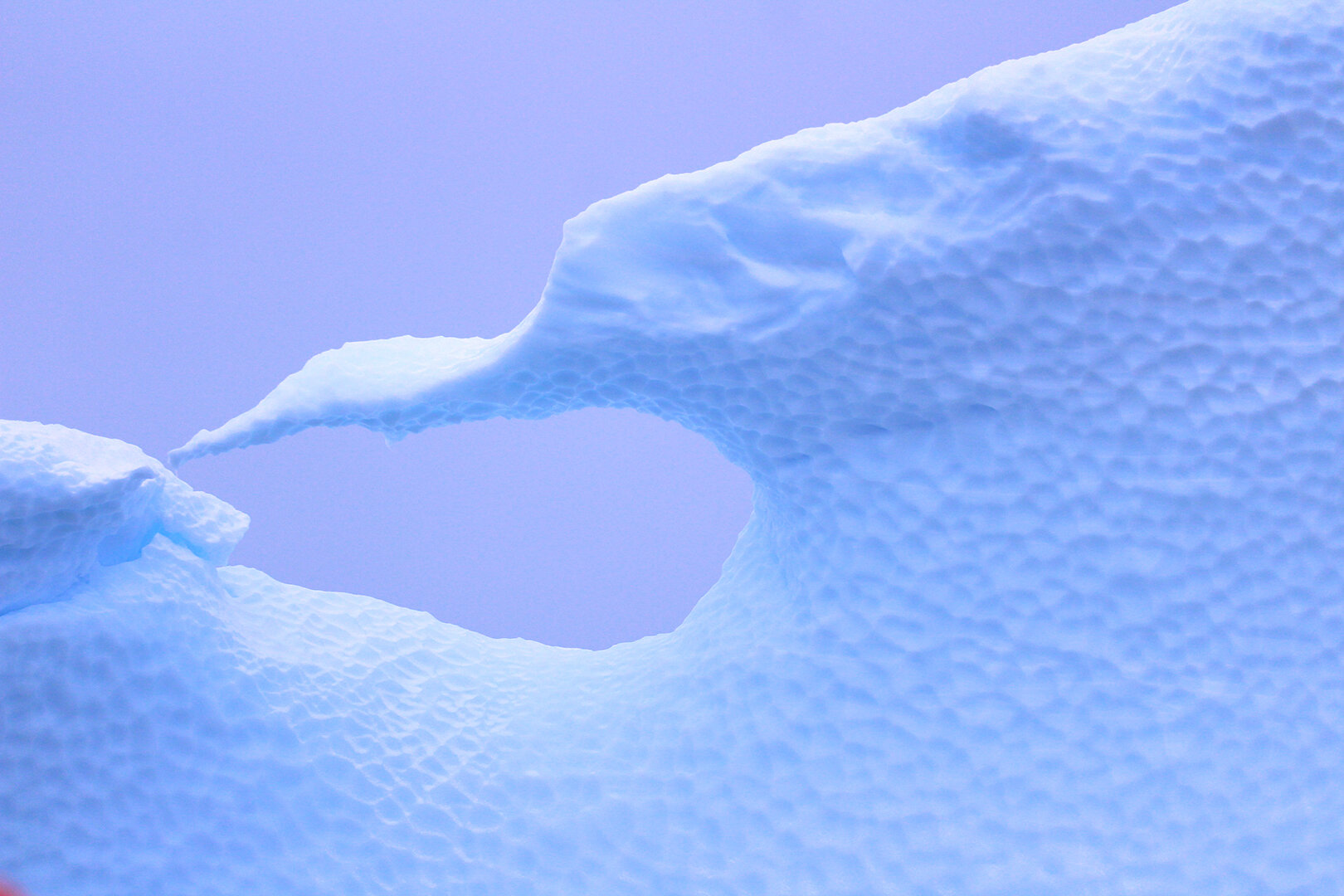
Sea ice is vital to the biology of the Antarctic. It provides the phytoplankton to nourish the krill, small crustaceans that are the main staple in the diets of nearly every other Antarctic creature. Although efforts are being made to make sure krill fisheries remain sustainable, commercial uses of this backbone of the southern ocean’s ecosystem include fish food and Omega-3 pills. Sadly, diminishing krill stocks in some places may be already affecting the well-being of penguins, fish, seals and whales.
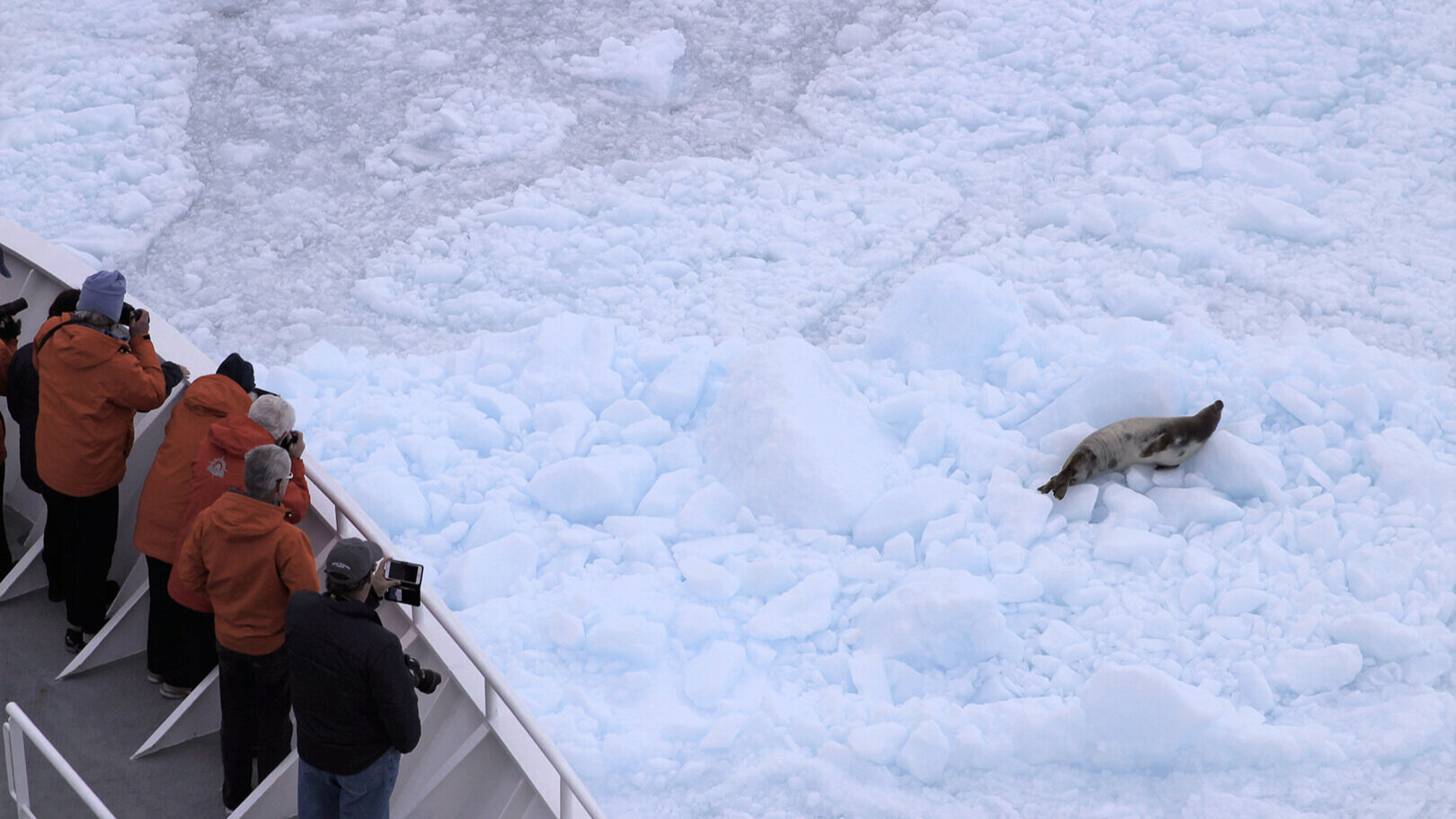
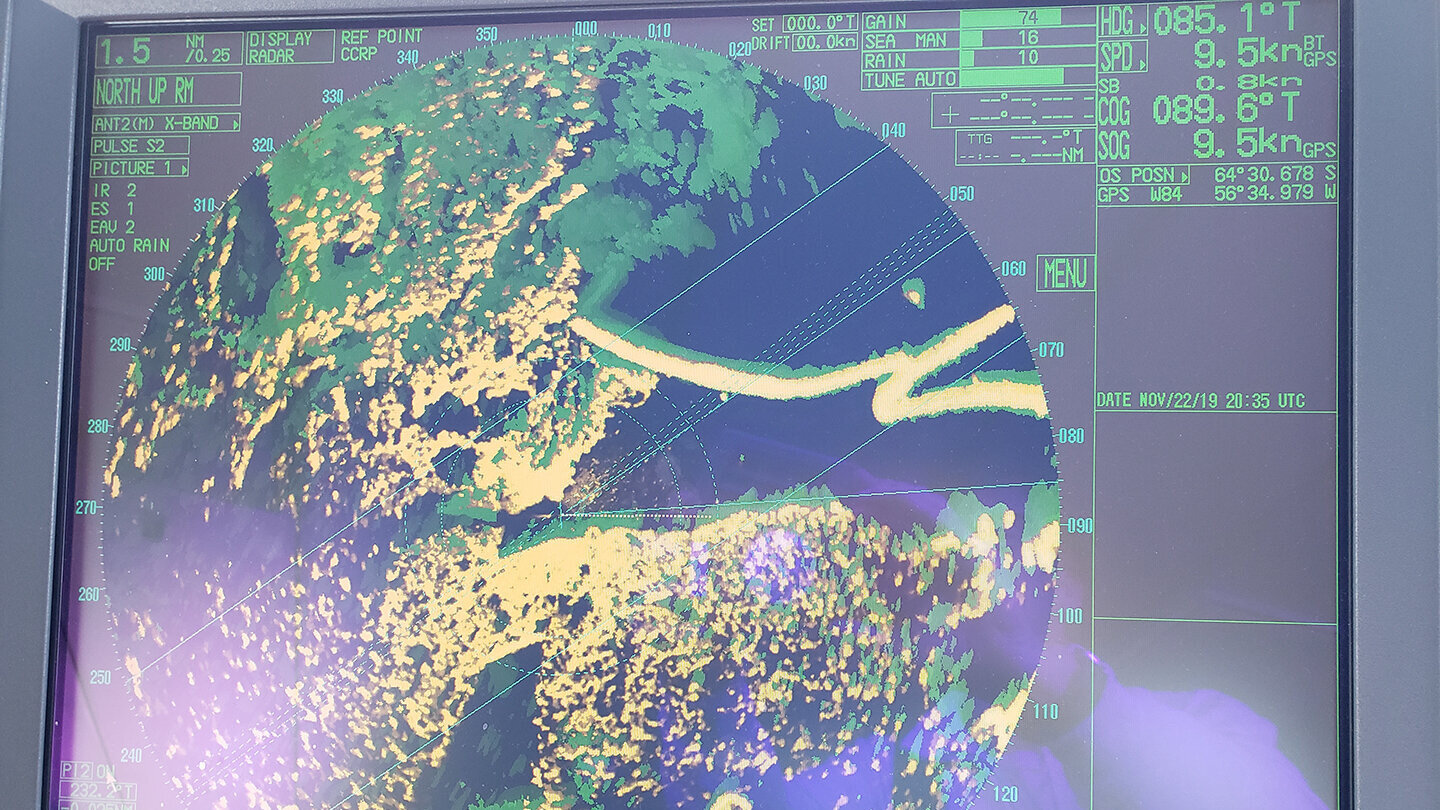
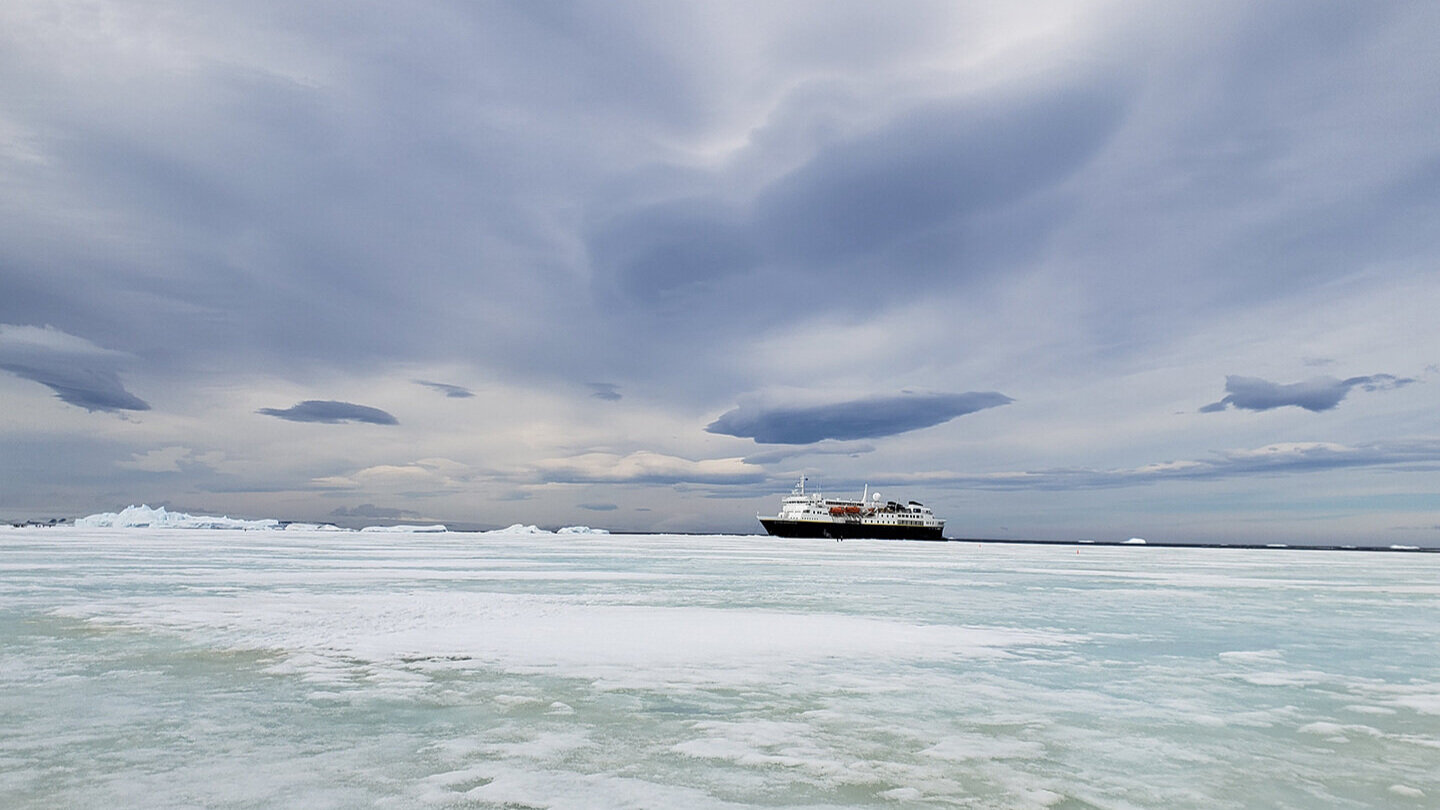
An exciting benefit of being on an early-season expedition were several chances to walk on the unmelted sea ice, and even cross-country ski! The terrain, though slushy in places, was flat and inviting, and we were able to range quite far from the ship. In one memorable foray, we mingled with emperor penguins (a first even for many of our naturalists!) as they made their way to sea from their colonies many miles inland.
Our ship, sea ice, and all of us ‘orange penguins’. (Click the image to see more)
[Our hosts were the cream of the crop at National Geographic and Lindblad Expeditions. See more at nationalgeographic.com/expeditions/]

